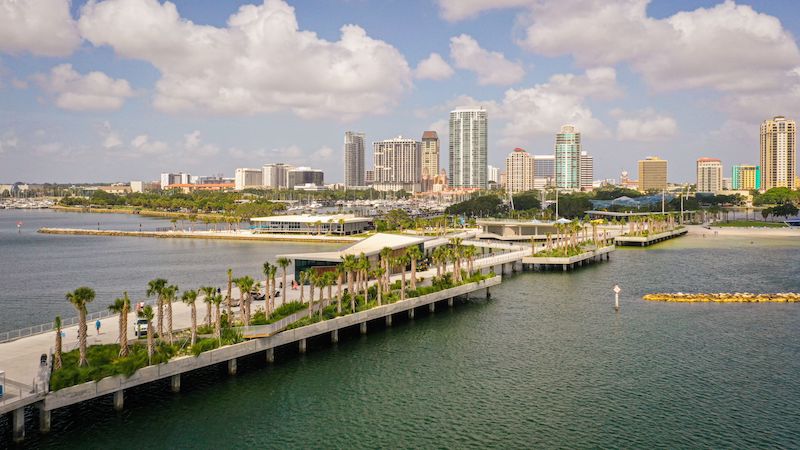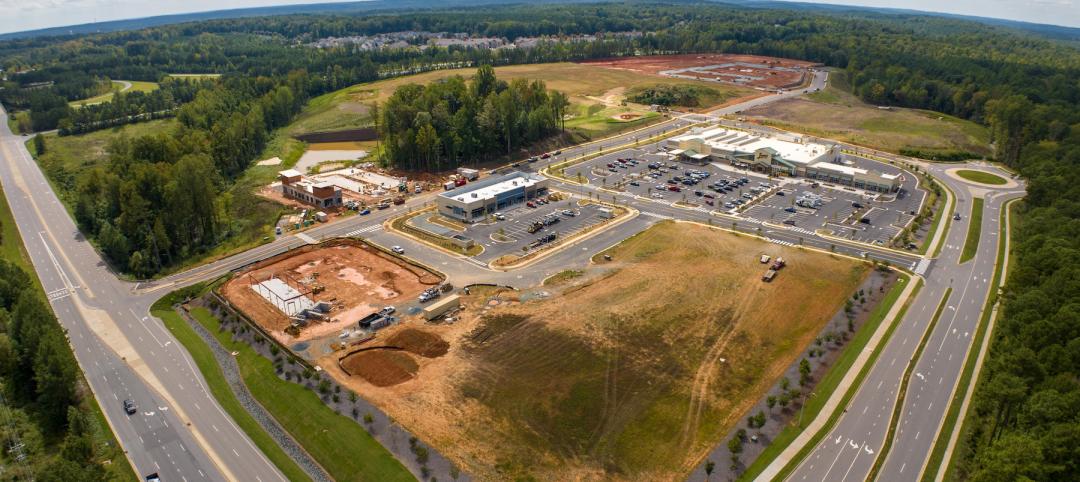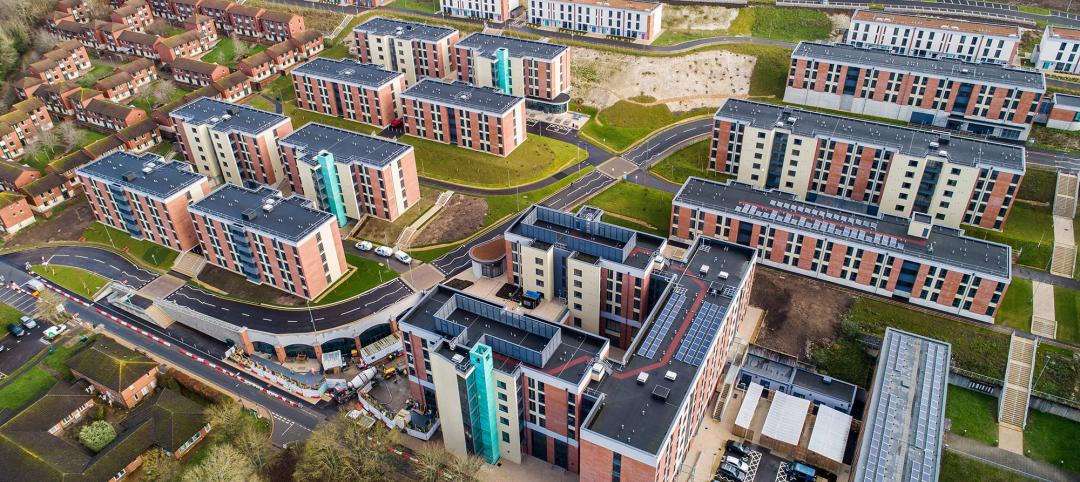The $92 million reconstruction of the St. Petersburg Municipal Pier has completed. Dubbed the Pier District, the 26-acre project includes a park, a 1,400-foot pier, a beach, restaurants, shops, artwork, interactive experiences, and entertainment and education areas.
Other project components include a custom-built, million-dollar playground; an interactive splash pad; a tilted lawn; the Spa Beach Pavilion; the Marketplace with its Solar Shade Structures and Market Stalls; the 35,000-sf pier plaza; the five-story Pierhead building; and the Tampa Bay Watch Discovery Center.

Five of the pier’s previous caissons were preserved and are now being used to support the fishing deck of the new pier. New 24”x24” precast concrete pile foundations were driven an average depth of 75 feet below the mudline and are made of FDOT class five concrete, including admixtures for extreme marine environments and weather conditions, and have a lifetime of at least 75 years. The new pier has also been elevated to consider projected sea level rise through the year 2100.
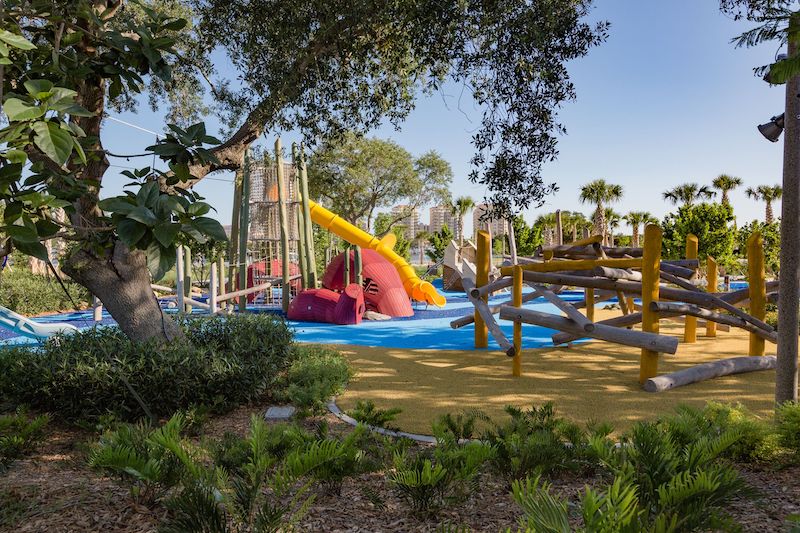
Admission is free to the public and visitors can arrive via boat and dock at one of the courtesy boat slips or drive and park in a lot fit-out with solar photovoltaic canopies. Eco-friendly trams continuously run and connect the entire property.
See Also: Two eight-story residential towers and a dining commons complete on Cal Poly Pomona’s campus
Skanska provided reconstruction and construction management services for the project.
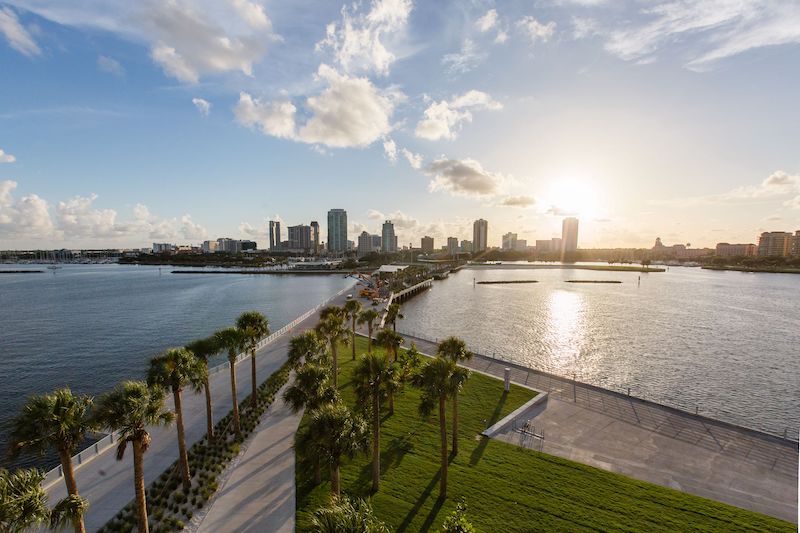
Related Stories
Mixed-Use | Oct 5, 2023
Mixed-use pieces supporting a master plan in North Carolina fall into place
Near Chatham Park, a new multifamily housing community follows the opening of a shopping center.
Contractors | Sep 25, 2023
Balfour Beatty expands its operations in Tampa Bay, Fla.
Balfour Beatty is expanding its leading construction operations into the Tampa Bay area offering specialized and expert services to deliver premier projects along Florida’s Gulf Coast.
Mixed-Use | Sep 20, 2023
Tampa Bay Rays, Hines finalize deal for a stadium-anchored multiuse district in St. Petersburg, Fla.
The Tampa Bay Rays Major League Baseball team announced that it has reached an agreement with St. Petersburg and Pinellas County on a $6.5 billion, 86-acre mixed-use development that will include a new 30,000-seat ballpark and an array of office, housing, hotel, retail, and restaurant space totaling 8 million sf.
Adaptive Reuse | Sep 19, 2023
Transforming shopping malls into 21st century neighborhoods
As we reimagine the antiquated shopping mall, Marc Asnis, AICP, Associate, Perkins&Will, details four first steps to consider.
Resort Design | Sep 18, 2023
Luxury resort provides new housing community for its employees
The Wisteria community will feature a slew of exclusive amenities, including a market, pub, and fitness center, in addition to 33 new patio homes.
Adaptive Reuse | Aug 31, 2023
Small town takes over big box
GBBN associate Claire Shafer, AIA, breaks down the firm's recreational adaptive reuse project for a small Indiana town.
Giants 400 | Aug 22, 2023
Top 115 Architecture Engineering Firms for 2023
Stantec, HDR, Page, HOK, and Arcadis North America top the rankings of the nation's largest architecture engineering (AE) firms for nonresidential building and multifamily housing work, as reported in Building Design+Construction's 2023 Giants 400 Report.
Giants 400 | Aug 22, 2023
2023 Giants 400 Report: Ranking the nation's largest architecture, engineering, and construction firms
A record 552 AEC firms submitted data for BD+C's 2023 Giants 400 Report. The final report includes 137 rankings across 25 building sectors and specialty categories.
Giants 400 | Aug 22, 2023
Top 175 Architecture Firms for 2023
Gensler, HKS, Perkins&Will, Corgan, and Perkins Eastman top the rankings of the nation's largest architecture firms for nonresidential building and multifamily housing work, as reported in Building Design+Construction's 2023 Giants 400 Report.
Adaptive Reuse | Aug 17, 2023
How to design for adaptive reuse: Don’t reinvent the wheel
Gresham Smith demonstrates the opportunities of adaptive reuse, specifically reusing empty big-box retail and malls, many of which sit unused or underutilized across the country.


